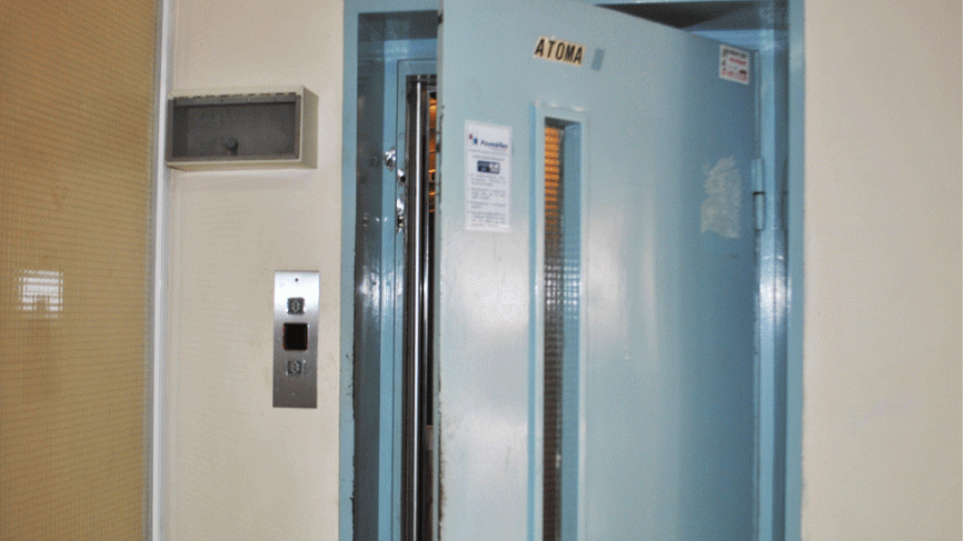INFORMATION NOTE
MINISTRY OF DEVELOPMENT AND INVESTMENT
GENERAL GRAMMAR B I O M I C H A N I A S
DIRECTORATE OF TECHNICAL PROFESSIONS AND SECURITY FACILITIES
A t h or n a , 01. 12. 2021
«Requirements regarding registration, operation, maintenance and control of installed lifts» > A P O F A S I S
- Complete overhaul of the provisions of the existing legislation in the context of our country’s European obligations, alongside the application of rules of healthy and equal competition in the business activity of the said sector concerning the provision of maintenance services.
- Provisions structured in line with the requirements of operation and application of the new Unified Register of Elevators , of Law 4712/2020, article 35 with references to the special applications of the Unified Register which essentially simplify the following procedures:
- Registration (by an installer, recognized body) – rendering of a lift identification number
- Notification after due diligence – provision of notification number
- Assignment of maintenance
- Undertaking of maintenance
- Change of maintenance workshop
- Temporary suspension of operation and maintenance
- Assignment of control (confirmatory, periodical, emergency)
- Register update for the maintenance carried out
- Register update with issued control certificates of the recognized bodies
- Monitoring by Municipalities and Regions services
- Licensing of maintenance workshops (prospect of full digitization of the process)
- Clear definition of the scope of the provisions in line with the European directive2014 /33/EU“for the harmonization of the laws of the Member States relating to lifts and safety components for lifts“
- Introduction of the necessary scientific and technical terminology to define the concepts with the aim of clarifying the use of the terms in the text of the decision.
- Complete separation of responsibilities and obligations to those involved in the system (owners – managers, maintainers, control bodies, supervisory authorities ) with clear and unambiguous provisions, distributed in separate articles.
- Introduction of a recognized methodology for elevator maintenance procedures with reference to the European standard ELOT EN 13015:2001 + A1.
- li>Establishment of the “maintenance planning” for each maintained elevator.
- Establishment of the “Certificate Control” by a recognized body to certify the safety level of the elevators, installed before 30.06. 1999.
- Establishment of the “Notification” process as a pre-stage of the registration process for the smooth and gradual implementation of the required technical compliance actions by managers based on the report of the body that carried out the verification audit
- Reformation of the process of supervisory controls, but also of the imposition of sanctions.
K Y R E S A L L A G E S A P O T H I N Y FIST A M E N I C Y A
The amendments to the provisions of of the existing KYA were based both on the obligation to adapt to technological development and European obligations as well as on the identified problems that have been identified and analyzed to date by the competent Directorate of Technical Professions and Facility Safety of the General Secretariat of Industry. (questions of citizens and services of Municipalities and Regions). We mention relevant findings and requests, such as :
- the procedure of the Temporary Electrification of the elevator which is characterized as problematic in its application, as an initial electrification process.
- li>
- the registration process with the abolition of the presentation of supporting documents related to:
- Individual certificates required for the declaration of conformity
- Building permit (disengagement from urban planning provisions)
- Abolition of bureaucratic process of responsible declarations of maintenance assignment-undertaking
- Consolidation of scattered individual categories of existing elevators into 2 basic categories (before 6/30/1999 and after) and elimination of provisions with problematic application in relation to the provisions of the EU directives
- Reformation of the categories of periodicity of maintenance and periodic checks by rationalizing the time intervals and, where appropriate, introducing the parameter of the age of the elevator
- Abolition of inapplicable provisions outside the scope of technical industrial legislation, which are contrary to the simplification of control and maintenance procedures, but above all to the exercise of sound business activity and the liberalization of the market.
In this regard, we mention the currently existing conditions for the licensing of a maintenance workshop:
- minimum maintenance time obligation of the lift (45 minutes), regardless of its type, age and overall condition
- maximum number of mobile workshops (3) per maintenance manager
- minimum number of mobile workshop members (2 ) with unreasonably fixed composition.
- maximum number of elevators maintained (240) per mobile workshop.
- commitment of the exclusive employment of employees with the elevator maintainer through responsible declarations.
- staff insurance to an insurance company through responsible declarations.
- obligation for a dependent work relationship legally proven in case of granting a license to a legal entity (particularly problematic to apply, in cases of partnership of shareholders in OE, E.E. etc. , these are provisions of labor-insurance legislation beyond the competences of the GGB)
- Responsible declaration for parallel employment also in elevator facilities
It is noted that :
- provisions with the above topic were not found in any of the investigated technical legislation related to elevators, of other EU states
- the operation of the Single Register allows the monitoring of relevant parameters such as e.g. the maintenance carried out etc
- reformation of control procedures by Municipalities and Regions and actions, following an accident
It is noted that:
- for the preparation of the plan, relevant legislations of other EU states were studied and taken into account
- plan is the product of a Working Group, in which all the representatives of the production bodies (TEE, EETEM, Hellas Cert, POVESA, POMIDA, SEV, PETAK) participated, in addition to the service executives.






